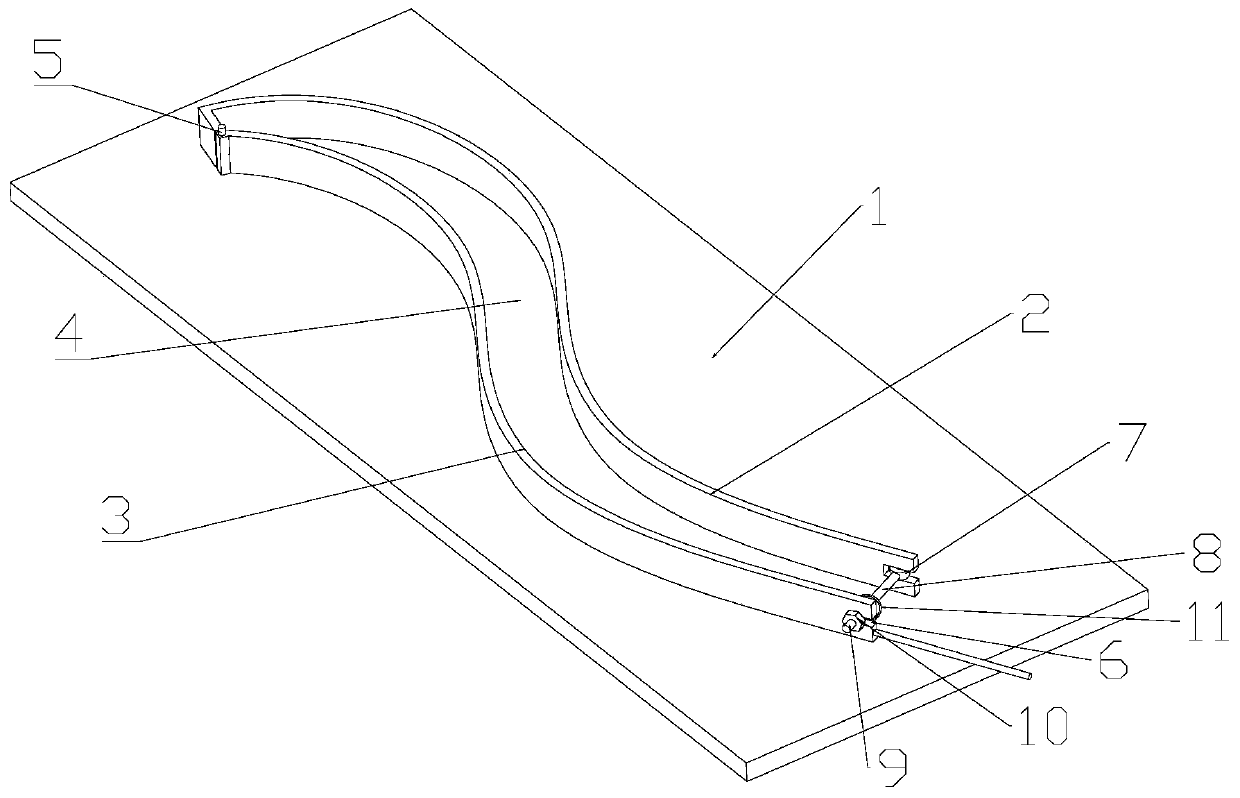Forming process for antique wood-plastic chair backrest strip
A molding process and backrest strip technology are applied in the field of molding process of antique wood-plastic chair backrest strips, which can solve the problems of inability to form wood-plastic strips, limit the artistic appreciation of products, etc., and achieve good molding effect, improved use and simple operation Effect
- Summary
- Abstract
- Description
- Claims
- Application Information
AI Technical Summary
Problems solved by technology
Method used
Image
Examples
Embodiment 1
[0022] A molding process for an antique wood-plastic chair backrest, comprising the following steps:
[0023] Step 1. Cut the wood-plastic strips into wood-plastic strips according to the specified size;
[0024] Step 2. Put the wood-plastic strips into the oven, heat up to 140°C for 1 hour, and keep warm for 40 minutes;
[0025] Step 3. Put the softened wood-plastic strip into the mold and set it for 5 minutes;
[0026] Step 4: Soak the mold with wood-plastic strips in water for 10 minutes, and the water temperature is room temperature.
Embodiment 2
[0028] A molding process for an antique wood-plastic chair backrest, comprising the following steps:
[0029] Step 1. Cut the wood-plastic strips into wood-plastic strips according to the specified size;
[0030] Step 2. Put the wood-plastic strip into the oven, heat up to 150°C for 1 hour, and keep it warm for 50 minutes;
[0031] Step 3. Put the softened wood-plastic strip into the mold and set it for 6 minutes;
[0032] Step 4: Soak the mold with wood-plastic strips in water for 15 minutes, and the water temperature is room temperature.
Embodiment 3
[0034] Such as figure 1 As shown, a molding mold for the backrest of an antique wood-plastic chair, the mold includes a bottom plate 1, and the bottom plate 1 is provided with a mold cavity 4 composed of a fixed template 2 and a movable template 3, and the mold cavity 4 has the same structure as the backrest strip. The fixed template 2 is fixed on the bottom plate 1, and one end of the movable template 3 is rotatably hinged on the bottom plate 1 through the first rotating shaft 5, and the middle part of the other end is provided with a gap 6, and the fixed template 2 corresponds to the gap 6. One end is equipped with a fixed shaft, the fixed shaft and the first rotating shaft 5 are all straight to the base plate, the fixed shaft is covered with a ring 7 that can rotate around the fixed shaft 7, a pin 8 is installed on the ring 7, and one end of the pin 8 is fixed The ring 7 is connected, and the other end is a threaded end 9 with an external thread. After the ring 7 rotates, t...
PUM
 Login to view more
Login to view more Abstract
Description
Claims
Application Information
 Login to view more
Login to view more - R&D Engineer
- R&D Manager
- IP Professional
- Industry Leading Data Capabilities
- Powerful AI technology
- Patent DNA Extraction
Browse by: Latest US Patents, China's latest patents, Technical Efficacy Thesaurus, Application Domain, Technology Topic.
© 2024 PatSnap. All rights reserved.Legal|Privacy policy|Modern Slavery Act Transparency Statement|Sitemap

